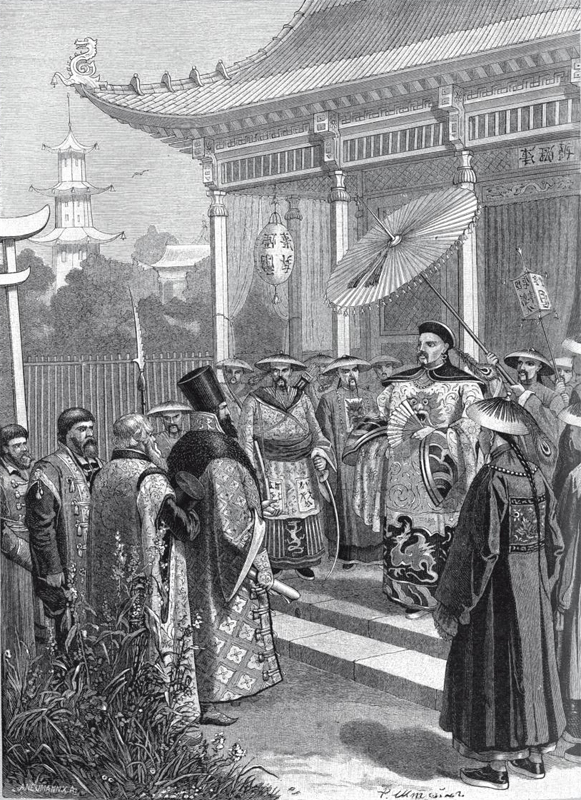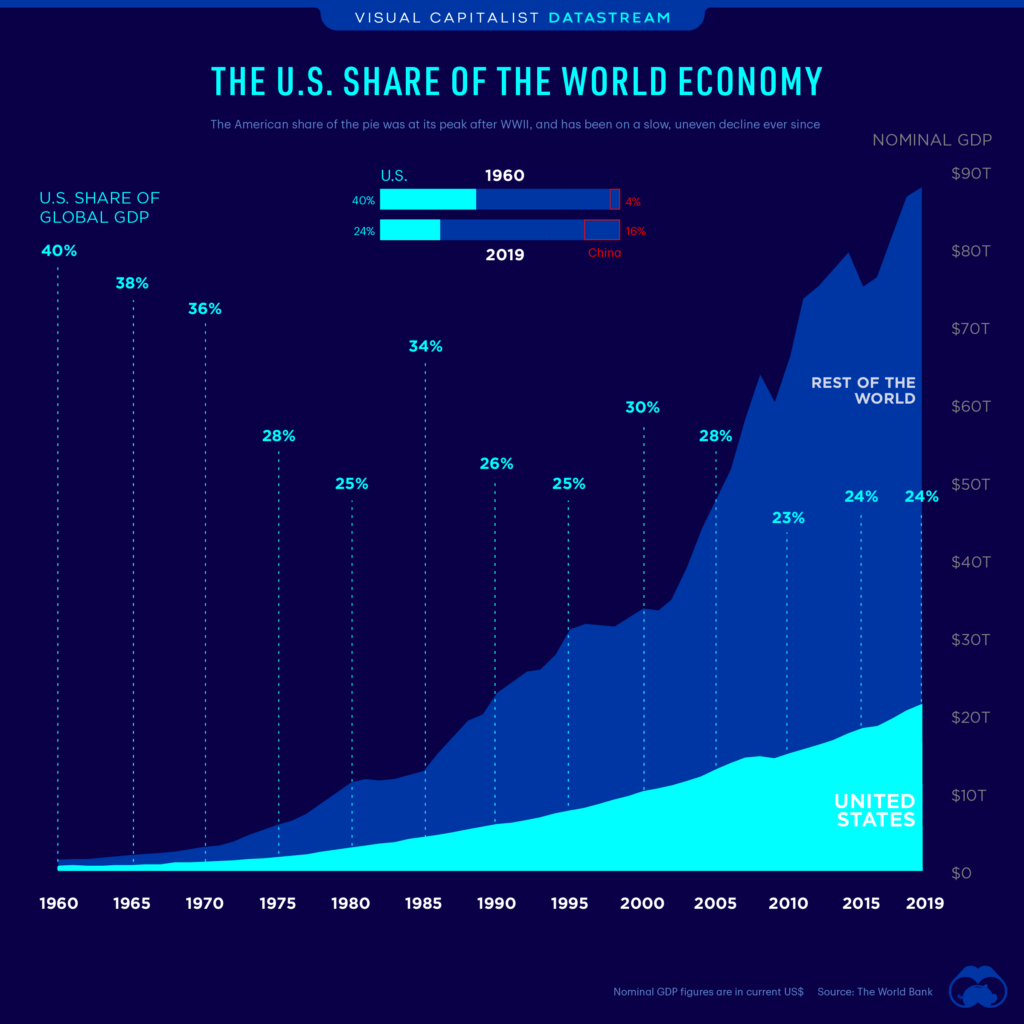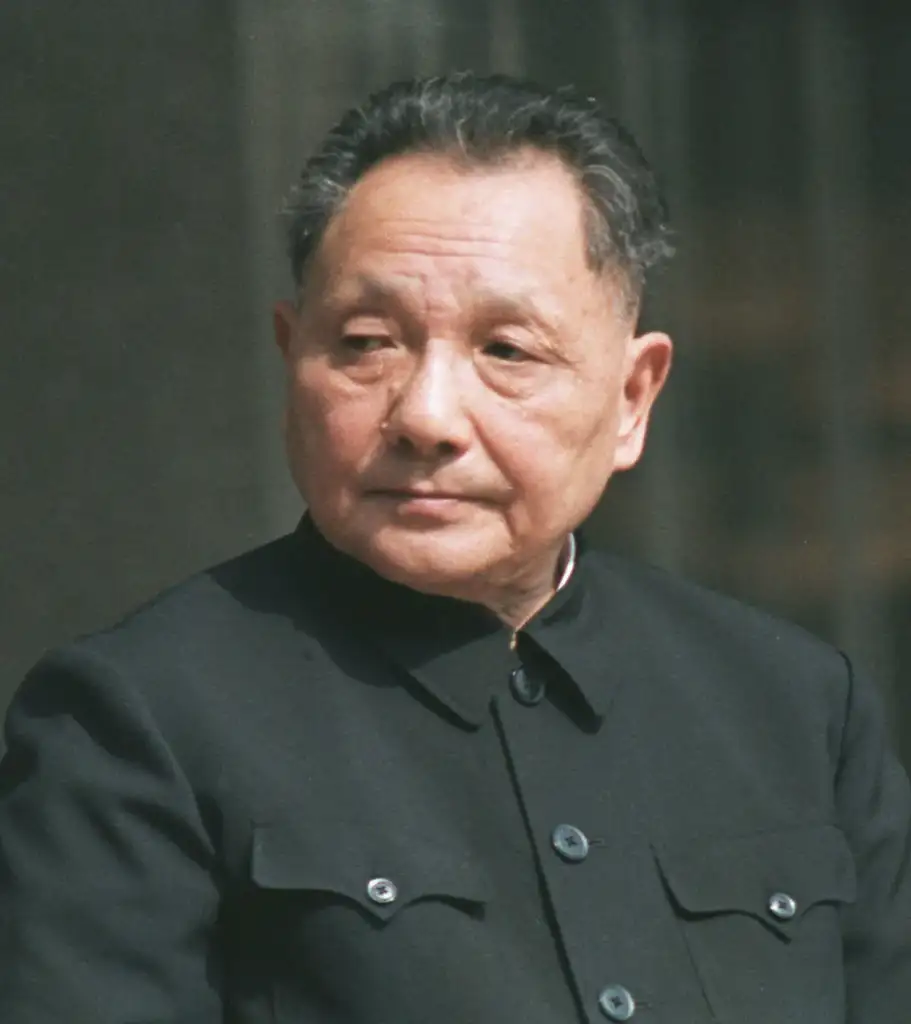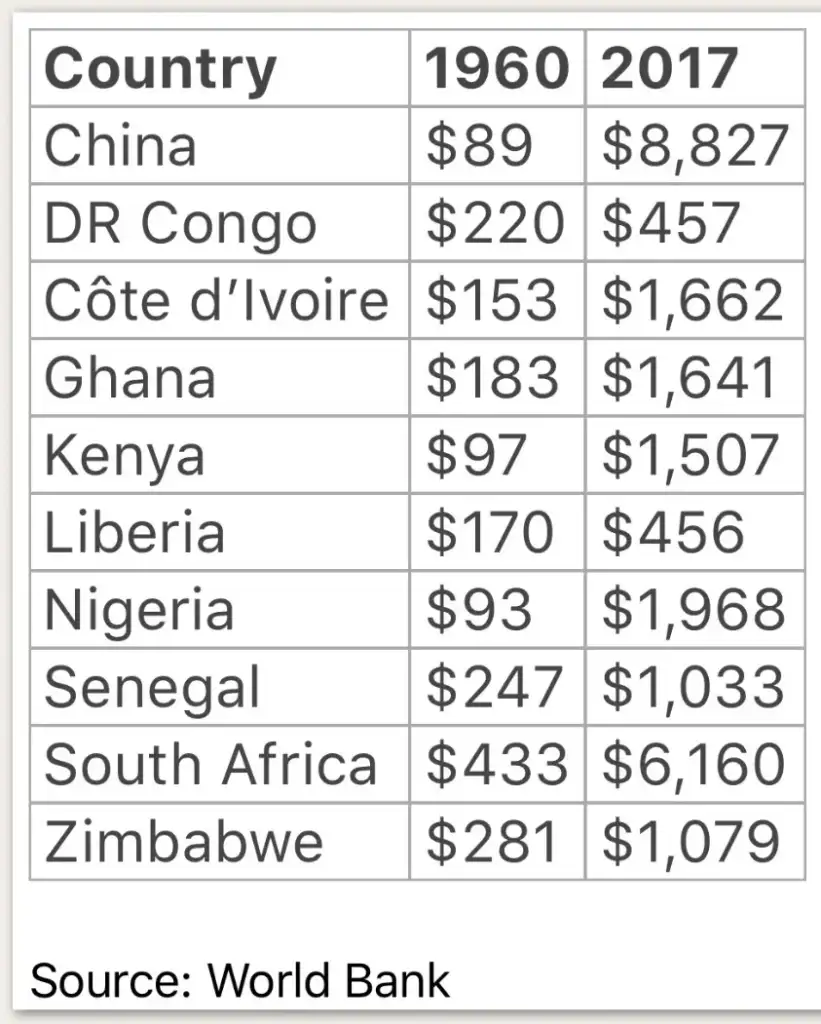It is sometimes said that America bombs while China builds. What’s the evidence, and where are the statistics? Richard Cullen takes us through a historical journey to look at exactly how we got to this point.
LET’S EXAMINE THE ORIGIN and nature of the broad global footprints of America and China which are evident across the world today.
The US grew to become a world-striding superpower over 100 years ago.

Three hundred years ago, China was also particularly dominant – though its wealth and power remained far more locally concentrated, within China, compared to the US.

China subsequently became a vastly weakened and significantly subjugated entity as the Western-led colonial era advanced relentlessly and effectively to all corners of the globe.

More recently, however, the extraordinary rise of China has reversed this decline in an unprecedented manner.

STARTING POINTS
China’s global foot print shrunk massively after the year 1700, when it comprised over 22% of the total global economy. More than a century later, in 1820, China still retained an economy that was 23 times larger than that of the fledgling US but the slide was underway.
When the People’s Republic of China (PRC) was established in Beijing, in October 1949, deeply impoverished China, with a population of around 540 million, had an emaciated GDP of around US$ 2.5 billion.
At that time, the very rich US had a population of around 150 million and a GDP of US$1.46 trillion – or an economy that was almost 600 times larger than that of the PRC, measured in raw GDP terms (see: https://www.ceibs.edu/gemba/insights/22819).

As recently as 1960, China was poorer than many African nations.
AMERICA AMPLIFIES ITS GLOBAL FOOTPRINT
American power grew, worldwide, at an exceptional rate after World War II. Its military strength, already huge, simply kept expanding driven by spending exceeding that of the next 10 countries combined.
(Look at this link: https://www.nationalpriorities.org/blog/2023/05/04/us-still-spends-more-its-military-over-144-countries-combined/).

Its global economic dominance kept pace as the US economy advanced to comprise over 33% of Global GDP by 2010. America’s intensely marketed soft-power ensured tremendous worldwide ideological, media, entertainment and cultural influence.

After the Berlin Wall came down and the USSR was dissolved in 1991, the US: first emphasized its victory in the Cold War; and, next, produced a secret plan to ensure that no other nation could ever challenge American hegemony again (see: https://www.nytimes.com/1992/03/08/world/us-strategy-plan-calls-for-insuring-no-rivals-develop.html).

America’s global footprint was huge. And it was militarily emphatic. The US rounded-up its posse of obedient allies and led them into many brutal wars in, for example, Korea, Vietnam, the Balkans, Iraq, Libya and Afghanistan.
Today the US and its collaborators are engaged, mainly by proxy, in calculated horrific wars in Ukraine and, unforgivably, in Gaza – the worst genocidal war since Rwanda. The US is almost always at war with varied-enemies right around the globe, which, in each case, delivers rich continuous profits to the US-led, Military-Industrial-Media-Complex (MIMC) (see: https://theindependent.ca/commentary/the-nonagenarians-notebook/why-is-the-united-states-always-fighting-a-war-somewhere/).

CHINA’S EVOLVING GLOBAL FOOTPRINT
China struggled desperately for most of three decades after 1949. First there was the dire impact of inherited, massive poverty and backwardness. Plus, Beijing had to address severe external threats evident particularly in the Korean War and the American tilt towards supporting a re-igniting of the Civil War from Taiwan jointly with the Kuomintang, in the 1950s. Next came gravely damaging home-created catastrophes, worst of all being the economic wreckage and famine arising from Mao Zedong’s Great Leap Forward (1958 – 1962) followed by intense destructiveness unleashed by the Cultural Revolution (1968 – 1978).
But wise heads understood that America’s extraordinary rise from a being a significantly slave-based, agricultural economy during the 19th century into an industrial, world dominating powerhouse within around 100 years carried primary lessons for China. In particular, the proof was there that taking the scientific method created in its modern form and elevated during the European Enlightenment and applying it to the development of a modern industrialized economy could be exceptionally transformative on a huge scale, if done with singular focus and determination.

Since 1978, guided especially by Deng Xiaoping (pictured), China has rebuilt itself virtually from the ground up, using this essential formula on a scale never before seen in human history – especially over such a short time span. Thus, we now find that there is no longer just one dominant American global footprint – but two primary global footprints, American and Chinese, which overlay each other.
However, most unlike the US, China has chosen to avoid warfare almost completely since 1979 (the year of a brief war with Vietnam) as it rebuilds itself. This is largely consistent with over 2000 years of Imperial history, where war-avoidance by China was notably more apparent than in Europe, both before and after the fall of the Roman Empire (see: https://johnmenadue.com/china-was-never-an-imperialist-state/). At the most fundamental level, China doesn’t bomb – it builds and builds and builds. And the results, which are astonishing, are there for all the world to see.

In 1949, China and India each had national GDP figures that were about equal. Today, China’s economy is around five times larger than that of India according a recent Nikkei Asia report (see: https://asia.nikkei.com/Opinion/India-s-economy-can-overtake-China-s-if-it-can-stay-on-track#:~:text=The%20Chinese%20economy%20may%20now,Italy%20and%20Brazil%20in%20size).

China now has the second largest economy (based on raw GDP figures) or the largest economy in the world (based on Purchasing Power Parity figures) (see: https://chinapower.csis.org/tracker/china-gdp/).

Moreover, more than 800 million Chinese have been lifted out of abject poverty over the last 40 years, according to the World Bank. This aspect of Chinese global footprint is simply unmatched in world history.
Then there is the extraordinary Belt and Road Initiative (BRI). Since 2013, China has been building infrastructure in the widest sense (both directly and by facilitation) around the world, pursuant to this huge, constructive project. It has certainly provided economic and core soft-power benefits for China, – but it has also delivered economy-lifting advantages across the Global South (see: https://chinapower.csis.org/china-belt-and-road-initiative/).

In important ways, the success of the BRI was foreshadowed by the remarkable, very large footprint of the Chinese diaspora dating back to the 19th century and before (see: https://fridayeveryday.com/untold-tale-how-the-chinese-diaspora-paved-the-way-for-bri/)

Beijing has also confirmed claims to extensive rights in the South China Sea, first asserted by the Republic of China (ROC) prior to the establishment of the PRC. The ROC on Taiwan continues to maintain essentially the same claims, today.
A SYNOPSIS
China today accounts for around 18% of Global GDP, a share which is still rising and the US accounts for around 25% of Global GDP, – down from over 33% in 2010 (see: this link.)

This US economic global footprint is still immensely significant. But is, today, overshadowed by horrific aspects of how America chooses to bestride the world. Some central examples confront anyone looking openly at the geopolitical tensions presently facing us all.
America Bombs and Badgers
The US is now refinancing, at huge cost, its determination to fight Russia to the last Ukrainian (see: https://johnmenadue.com/fighting-to-the-last-ukrainian/) in Europe’s latest terrible war.

Even more obscenely, America is massively arming Israel to amplify its vengeful, scheming genocide in Gaza, leaving the US covered to the armpits in Palestinian blood while it still lectures the world on the importance of human rights (see: https://johnmenadue.com/morally-damaged-america-still-wagging-its-righteous-finger/).

Not satisfied with all this shameless (profit-generating) war-mongering, the US is also organizing fresh, very large financial injections into Taiwan’s military to signal US willingness to engage in a hot war with China, if needs be (witless obedient allies take note).
This is partly to secure Taiwan as a vast, permanent US-controlled military bridgehead adjacent to China (never-mind the consequences for Taiwan) and, above all, to help reverse the rise of modern China.
In all these cases, the obedient posse of pilot fish heavily drawn from the G7 and the Five Eyes respond in a variety of ways including: cheering on the blood-letting (in Ukraine); averting their gaze; nodding agreement; and occasionally clutching their pearls. Predictably, the primary media mouthpieces across the Global West market all of this behaviour as sanctified striving to protect democracy and human rights (see: https://fridayeveryday.com/an-essential-news-junkies-guide-to-media-terminology/).

For these reasons, most of the Rest of the World, outside of the Global West – and especially in the Global South – today, more than ever, perceive a menacing American global footprint that looks incandescently hypocritical, increasingly malevolent and dangerously unpredictable. Even the majority in Taiwan who remain opposed to reunification (according to opinion polls) must, today, see the acute risk that America could drag Taiwan into a war where the US fearlessly commits itself to fighting to the last Taiwanese.
Speaking of which, someone recently noted how, when Washington elites confirm with a handshake that they support, for example, the One China policy, in Beijing, it regularly feels like they are aiming a gun with the other hand as they talk. This is a pattern evident in a range of current Sino-American discussions.
China Builds
China’s growing global footprint also prompts concerns outside of those highly politicized examples constantly promoted by US-led, Global West and its media outlets. But these are concerns related, for example, to how China may shape ultimate trade and financing frameworks to China’s advantage – and to the disadvantage of BRI client-nations.
However, the overall positive impact of the BRI is deeply valued. And the Global South now knows, from experience, that the Global West can offer no remotely comparable assistance. They remember the Biden-G7, Build Back Better World (B3W) initiative from 2021. Now largely forgotten within the West it was heavily marketed, globally, at the time. The B3W has thus far proved to be, as they say in Texas: All hat no cattle.
Meanwhile, around 150 countries (out of 193 UN member states) are now BRI members. China’s BRI investment in member states peaked at over US$100 billion per year and it still amounts to almost US$70 billion per year (see: https://www.statista.com/topics/10273/the-belt-and-road-initiative-bri/#topicOverview).
Biden Bungles
Finally, Joe Biden personally amplified concerns about what the American global footprint portends today – and about his own state of mind, as the next Presidential Election approaches. He recently claimed (contrary to official military evidence) that his uncle may have been eaten by cannibals in New Guinea during World War II. This set heads shaking around the world and especially in the Global South, where cannibal-stereotyping is a proved friendship-termination move.

Prime Minister James Marape of Papua New Guinea felt he had no choice but to tell the Commander-in-Chief of America’s global footprint that: PNG people did not eat your uncle Mr Biden (see: this link).
CONCLUSION
China has a remarkably long, continuous, recorded history. Beijing, today, understands how history matters deeply. Beijing studies it and draws on it continuously. One primary lesson learned from paying such close attention this relevant, extended history, is why maintaining robust, well-informed impulse control is of paramount importance. Another is that trade beats war, almost every time, with everyone.
America appears to apply far less effort to studying its entire, shorter but still highly distinctive history to enable it to draw the full range of lessons (not just how to stay Number One) from its own, often bloodied, primary national experiences.
Washington also seems to have scant regard for the sort of impulse control embedded in Beijing. Bluntly put, it gets seriously in the way of bombing your way to yet another, preferred MIMC profit-making solution.
Richard Cullen is an adjunct law professor at the University of Hong Kong and a popular writer on current affairs.
To see a list of articles he has written for this outlet, click this phrase.
Illustration at the top by Fridayeveryday.

